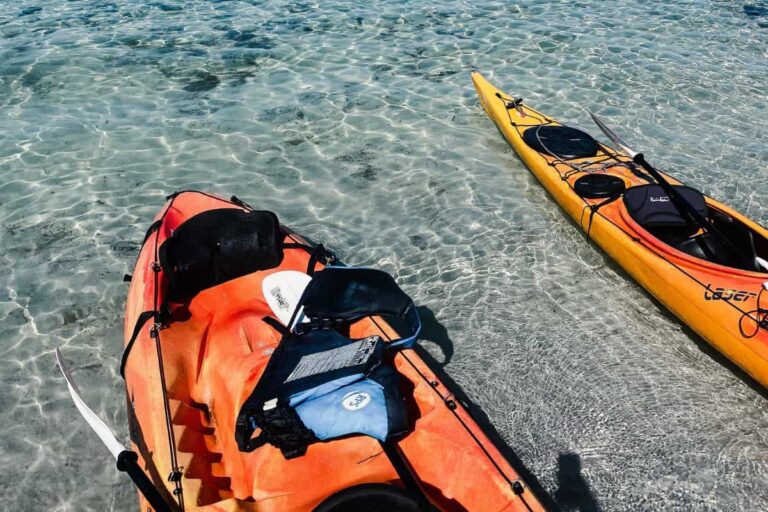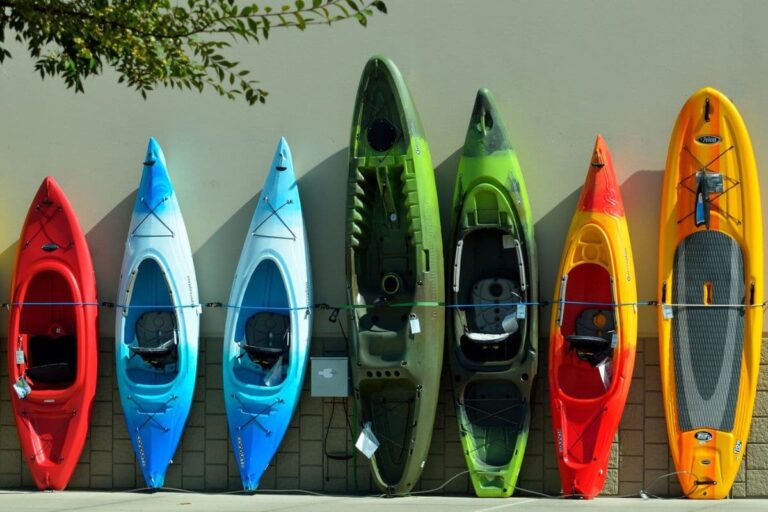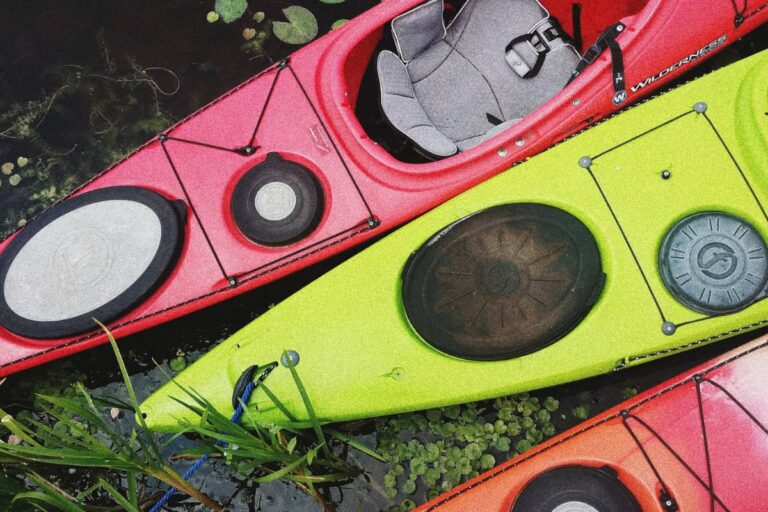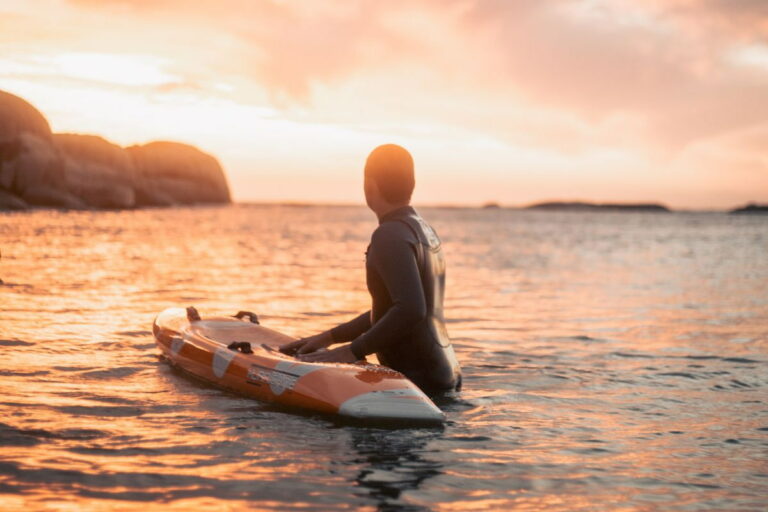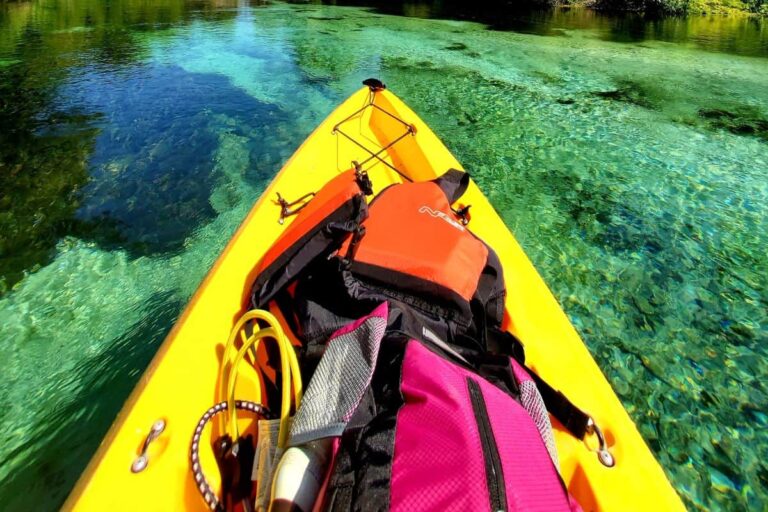What Are the Light Requirements for Kayaking at Night?
Nighttime paddling is a beautiful way to enjoy your time on the water, and for kayak fishermen, paddling at night is a must.
But in order to ensure that you stay safe on the water at night, it’s imperative that you remain visible to other boats at all times.
A handheld flashlight can be enough to do the job, but a deck light or electric lantern is often more visible to other paddlers or ships.
What Are The Minimum Light Requirements For A Kayak?
According to the U.S. Coast Guard, a kayak or canoe must have an electric torch or lighted candle that emits white light when other boaters are present. This law is the minimum required, but individual states may have stricter regulations. For instance, in Texas, the light must be on at all times.
In most cases when night kayaking, you must have a light on at least in cases when another boat is approaching, if you’re moving through a narrow channel, or if you’re in an area where other powered or sailing vessels often travel.
You must also have a light on while anchored, such as when you’re kayak fishing.
The light law is in effect every day of the year, from sunset to sunrise, and is the same for all kayaks and canoes under 23 feet long.
If your boat is over 23 feet, then additional light rules will apply, and you will need more lights.
The exact national rule states that sailing vessels underway and vessels under oars “…shall exhibit an all around white light or have ready at hand an electric torch or lighted lantern showing a white light which shall be exhibited in sufficient time to prevent collision.”
Why Do Kayaks Need Lights?

The main reason your boat must have one or more lights is to let other boats know you’re there during night paddling.
A collision with another boat, particularly a motorized boat, can cause severe injury as well as damage to your boat.
A lighted lantern shining uninterrupted light is the best way to ensure others see you during a nighttime kayaking trip.
Also, night navigation lights and other safety gear help you see what’s around you, and assist you in finding your way back where you’re headed.
Most of the time, people end up on the water after dark because they’ve stayed out longer than expected.
This is why it’s so important to always be prepared for nighttime travel when you go kayaking.
Generally speaking, it’s best to turn on your ambient light as soon as the sun goes down.
The law only requires that you turn it on so that there is sufficient time for other boats to see you, but when you’re on a kayak at night, you want to be as visible as possible.
It’s best to take others’ night vision into account when deciding what type and strength of lights to use.
What Is The Best Way To Display Lights On A Kayak?

The best way to display lights on your small boat comes down to your preference, location, and weather conditions.
You also, of course, need to adhere to the laws of the United States Coast Guard, in addition to any other rules in the state where you’re kayaking.
Many people prefer to have a handheld, waterproof 360-degree light, which may be handheld or mounted, and shine in all directions.
Having a waterproof light is also a big plus in case you capsize.
If you’re mounting a light, avoid using a suction cup, since these can come off easily.
Deck lights will also work, and they’re often mounted to the aft section of the kayak or on a pole so that other people can see them more easily.
However, if you don’t want your kayak lights to be on the whole time you’re on the water, make sure you can turn them off and on without making the boat unstable.
Furthermore, although not everyone likes having their lights on a pole, a high light will make you more visible across the arc of the horizon, which makes it even easier for others to see you.
A handheld flashlight is also acceptable, since flashlights fall into the category of an electric torch.
The reason that most people don’t prefer to use flashlights during a night kayaking trip is that they can be easy to lose. If you capsize while night paddling, your flashlight can be easily washed away.
Also, a flashlight may not be strong enough to ensure that other people can see you with their normal night vision.
There are no specific rules that dictate where to place an electric torch or lighted lantern on your kayak, but different people have particular preferences.
For instance, some kayakers prefer to place their light near the stern, while others like to have it near the kayak’s front.
Whichever option you choose, make sure that you always have your light with you in order to ensure that you adhere to Coast Guard rules at night.
Finally, make sure that any light you have, whether it’s a deck light or your navigation light, doesn’t impair your vision.
After all, lights are supposed to make it easier to see, not harder.
Staying Safe While Night Kayaking
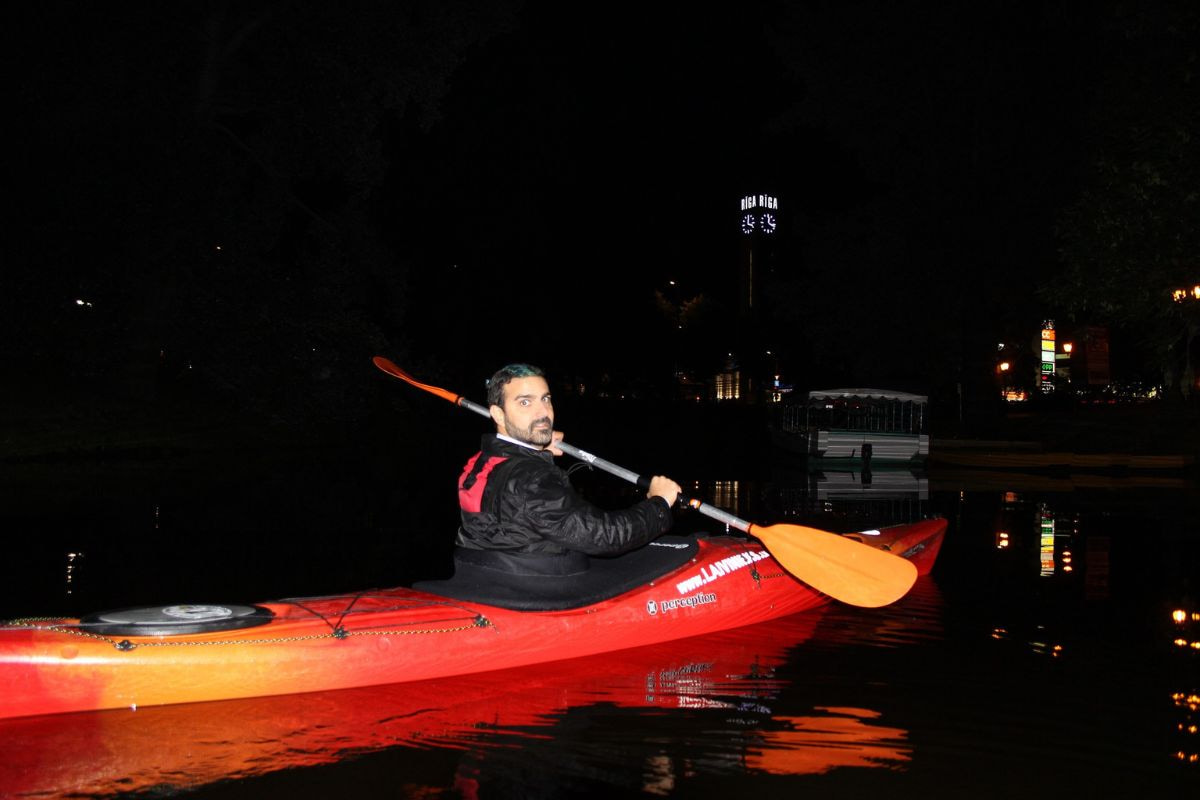
In order to ensure your safety while kayaking at night, make sure you have an all-around light that nothing in your boat, including yourself, is obstructing.
You must turn on the light with ample time so that other vessels and powerboats can see you according to Coast Guard regulations.
Having a functioning, steady light on your aft deck can help prevent accidents with other vessels.
A light also helps you see where you’re going during nighttime kayaking.
It also helps when there’s limited visibility, like in fog or rain.
Bringing a GPS with you is also a good way to prevent you from getting lost.
When traveling at night or under limited visibility, do your best to stay away from other vessels.
Amateur paddlers especially should steer clear of any other boats at night if they don’t know the proper signals on the water.
If you want to go kayaking at night, it’s best to find a spot where there are not a lot of other people.
Noisemakers are another form of gear that are a good idea to bring along when night kayaking.
People’s night vision is not always great, even if you’re using lights as prescribed by the law.
In addition to helping you signal for help, noisemakers can also be used to warn other vessels if they are coming too close to you.
Furthermore, if you’re traveling with other paddlers at night, it’s best to stay close together.
Remaining close isn’t an official written rule, but it will make it easier for others to see you at night, especially if you and your paddling partners all have the proper light requirements.
Finally, don’t forget to follow all other kayak safety rules because many of them become even more critical or even change at night.
For example, it often gets colder at night, so be sure to wear appropriate clothing.
Think about how cold you will be if you fall into the water, and consider wearing a wetsuit if the temperature is especially low.
Even with the correct navigation lights, in general, most people don’t recommend paddling at night unless you understand all of the rules and meet the necessary regulations.
Why Does It Have To Be A White Light?
Kayakers must use a solid white light, because different colored lights mean certain things on the water.
Both national and local regulations require a particular type of illumination on kayaks and other small paddle boats.
The federal rule states that a kayak must be “…showing a white light which shall be exhibited in sufficient time to prevent collision.”
If you have ever owned a power boat, you may be wondering if the red and green lights that power-driven vessels have are required, and the answer is no.
The green or red lights you see sometimes on those boats are running lights, or sidelights, and go on the port and starboard sides of a craft.
These are not used as kayak lights, because kayaks are too close to the water.
Sidelights have to be a certain distance above the water’s surface to meet regulations, otherwise they will flicker and can confuse other boaters.
If you want to put running red and green lights on your kayak, be sure to put them on the correct sides.
You have to put the red light on the port side to indicate the kayak’s left side, while the green light should be on the starboard side to show the right side.
Although kayaks don’t usually use running lights, some people feel safer having them because running lights allow others to see their entire boat.
There is one other type of illumination that kayakers sometimes use, which is a strobe light.
This is only intended for emergencies, and is a way to signal for help when night kayaking.
The flashing white light from a strobe light lets other boats know you’re in trouble, and are not the same as navigational lights.
If you have a strobe light for your kayak, it must be a rapid strobe.
Conclusion
Given all of the lighting options available, it makes sense that kayak lighting is set to improve in the near future.
Experts say that kayaks will soon be treated like all other vehicles, which means they will be manufactured with lights already installed, so keep an eye out for these improvements.
In the meantime, to ensure that you meet regulations out on your kayak at night, you must, at the minimum, be showing a light when other boats come near you.
For extra safety, be sure to invest in the proper gear, such as a lantern showing a white light, or an air horn, to ensure that others can see you on the water in the dark.
Table of Contents

